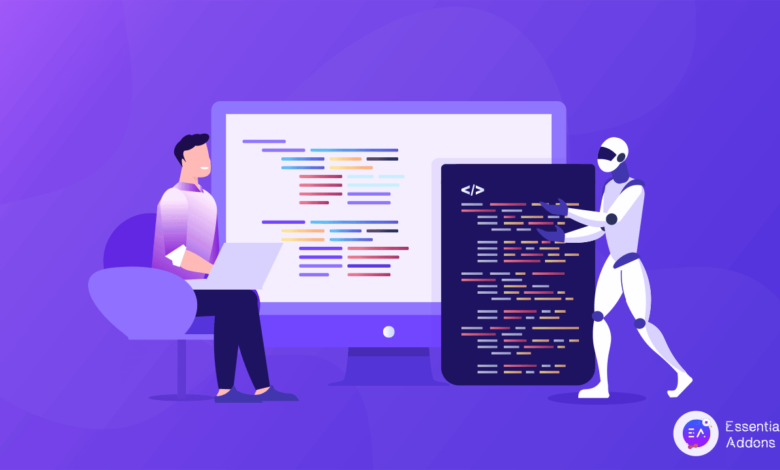Exploring AI’s Role in Modern Website Redesign

Your website isn’t just a digital storefront, it’s a dynamic experience that reflects your brand, understands your users, and drives business outcomes. Traditional website redesigns, once focused largely on aesthetics, are no longer enough to meet rising user expectations. Enter AI website redesign: a transformative approach that uses artificial intelligence to decode user behavior, personalize experiences, and continuously optimize design decisions based on real data.
In this blog, we’ll explore why AI is becoming indispensable in modern website redesigns and how it can help you stay ahead in a hyper-competitive market.
Why Traditional Website Redesigns Fall Short Today
Reliance on Assumptions
Most traditional redesigns are driven by internal opinions, outdated benchmarks, or design trends not by user data. Stakeholders may decide on layouts or messaging based on preference rather than actual user feedback. This guesswork often leads to costly revisions after launch.
One-Size-Fits-All Approach
A single static website experience is no longer effective for today’s diverse user base. Whether it’s a returning customer, a first-time visitor, or someone on mobile vs. desktop users expect personalized, context-aware journeys.
Long Redesign Cycles
Traditional redesigns typically take months and involve multiple handoffs between teams. By the time the website goes live, the business strategy or user expectations may have evolved, rendering the new site less effective.
Limited Feedback Integration
There’s often minimal user testing until the final stages of redesign. This means issues aren’t caught early, and there’s little room for real-time iteration.
How AI Is Transforming Website Redesign
User Behavior Analysis
AI tools can analyze millions of data points, scroll patterns, click paths, exit points, time-on-page metrics to surface real behavioral insights. This goes beyond what traditional analytics platforms offer. AI can uncover:
- Friction areas in navigation
- Abandoned cart trends
- Content drop-off points
- User intent prediction based on behavioral clustering
For example, if a large percentage of users are abandoning a form on the second field, AI will flag this and suggest solutions like simplifying the field or changing its placement.
Personalized User Experiences
AI enables real-time content and layout adjustments based on user behavior, demographics, and preferences. This includes:
- Showing location-specific offers
- Reordering homepage sections based on user interest
- Serving different hero banners based on time of day or referral source
- Adjusting CTA wording based on past user interactions
Personalization creates a sense of relevance that keeps users engaged and boosts conversion rates.
Design and UX Optimization
AI enhances A/B and multivariate testing by:
- Automatically testing hundreds of design combinations
- Predicting the winning variation faster
- Allocating traffic dynamically for better statistical efficiency
Tools like Google Optimize and VWO use machine learning to determine which variations to show users, leading to continuous improvements in real-time.
Conversational Interfaces & Smart Navigation
AI-powered chatbots can:
- Answer FAQs and guide users in real-time
- Offer product recommendations
- Help users complete tasks or forms
- Improve accessibility with voice commands
Navigation is also becoming predictive. AI can analyze historical behavior and suggest the next best step for the user, reducing bounce rates and increasing engagement.
Speed, SEO, and Performance Enhancements
AI plays a role in:
- Lazy-loading and compressing assets without quality loss
- Analyzing and fixing performance bottlenecks
- Enhancing Core Web Vitals automatically
- Managing meta tags, schema markup, and content indexing
All of these contribute to better SEO performance and lower bounce rates, especially on mobile devices.
Real-World Examples of AI in Website Redesign
E-commerce
Retailers like Amazon use AI to personalize homepages, recommend products, optimize pricing, and manage inventory forecasts based on user behavior and external trends.
Media Platforms
Streaming services like Netflix use AI to tailor thumbnails and content suggestions based on watch history, engagement levels, and content trends.
SaaS Companies
Companies like Intercom and HubSpot leverage AI in onboarding flows, dynamic dashboards, and chatbots to improve user retention and reduce churn.
Small Businesses
Even smaller companies are using tools like:
- Hotjar + FullStory for behavior analytics
- Surfer SEO for AI-powered content optimization
- ChatGPT plugins for copywriting and conversational design
Key AI Tools and Technologies Powering Modern Redesigns
- Adobe Sensei: AI-powered content tagging, layout generation, and user personalization.
- ChatGPT + Zapier: Automates conversational experiences and integrates with CRMs, email platforms, and more.
- Surfer SEO + Jasper: Helps create optimized, engaging content tailored to user intent.
- Google Optimize: A/B and multivariate testing powered by machine learning.
- Crazy Egg + Hotjar: Visual behavior tracking tools that leverage AI insights for UX improvements.
Challenges and Considerations When Using AI
Privacy and Data Ethics
Ensure all AI implementations comply with GDPR, CCPA, and other regulations. Be transparent about data collection and offer users control over their data.
Creativity vs. Automation
AI can suggest designs or copy, but it still requires human oversight to maintain brand voice, emotional resonance, and storytelling depth.
Over-Reliance on Algorithms
Blindly following AI recommendations may create generic experiences. Balance data-driven decisions with human intuition and brand strategy.
The Future of AI in Web Design
The next wave of AI advancements will enable:
- Predictive UX: Websites that adapt in real time to anticipated user actions
- Generative Design: Entire page layouts created by AI based on content goals
- Emotion-Aware Interfaces: Designs that respond to user sentiment or tone
- AI-Powered Accessibility: Tools that adjust UI elements dynamically based on disabilities or user preferences
As AI becomes more advanced, the web will shift from being reactive to becoming proactive and hyper-personalized.
Conclusion
Redesigning your website in 2025 isn’t about making it prettier, it’s about making it smarter, faster, and more human-centric. AI enables websites to evolve with your users, offering tailored experiences, performance gains, and measurable business value.
At Beetle Beetle, we believe that the future of web design lies at the intersection of AI and user empathy. Our team helps businesses move beyond guesswork and toward growth with intelligent, performance-driven redesigns.
Book a free clarity call to discover how an AI website redesign can elevate your digital presence and deliver results that truly matter.




